Professional Tools for all of your Embedded System’s Developments
A shorter time to market, a better quality of the application software and a better productivity by using professional tools. We offer end-to-end product design & test tools in the embedded domain helping the customer to translate ideas into products that can be brought to market faster. From concept to deployment, our tools for embedded devices assist developers through all product development lifecycle of requirement analysis, hardware development, system software, application development and testing.
Lauterbach provides comprehensive integrated debug environments for embedded designs. The TRACE32® product portfolio covers the whole development process and includes a Universal GUI (PowerView), Debug tools, Trace tools for program/data flow and Logic analyzer tools. TRACE32® tools support over 80 of the most common microprocessor architectures in use in the embedded market.
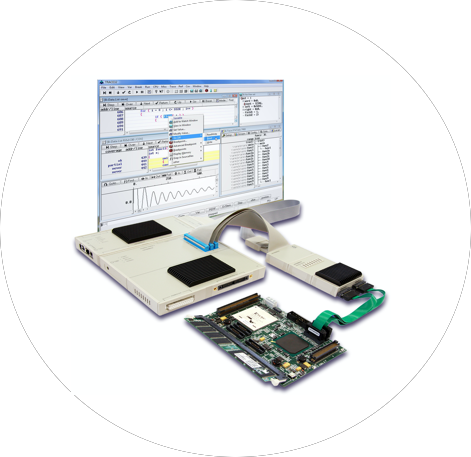

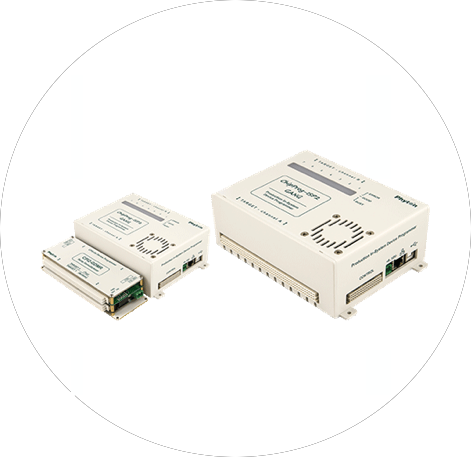
Debug tools play a very important role in the development of embedded systems and there are multiple solutions available for almost any microprocessor, microcontroller, DSP and SoC application. The tools which are designed around common modules and which are universal and architecture independent.
Lauterbach
Lauterbach is the largest manufacturer of emulators and debuggers worldwide. TRACE32 tools provide a comprehensive debug environment supporting all standard features and giving access to advanced on-chip debug features.
Lauterbach tools are mostly used in the following ways:
Debug
Most modern cores for the embedded market have a debug port, and tools can be connected to this port to control the core, access the data being processed by the core and then debug by single stepping, breaking, tracking values of variables and reading registers and memory. This means developers can diagnose software failures and memory corruption issues and correct the system to make it behave as expected.

Debug and Trace
In many applications it is no longer enough to run a simple test on your code. In markets such as automotive, medical, aerospace and defence, it is increasingly necessary to prove how the code behaved under all possible conditions and in Real-Time. This requires the tools to record the program flow information from the core via the target cores’ integrated trace port. Both long-term and high-speed trace options are supported.



Logic Analyzer
In addition a logic analyzer can be integrated to provide signal trace for logic analysis and protocol analysis as well as correlating power usage to the code operation.

Debugger for Virtual Targets
Development is increasingly being undertaken in simulators. As the technology and market leader of microprocessor development tools Lauterbach is active in this development area, i.e. TRACE32 software-only products can be used for debugging virtual prototypes as well as simulated models.
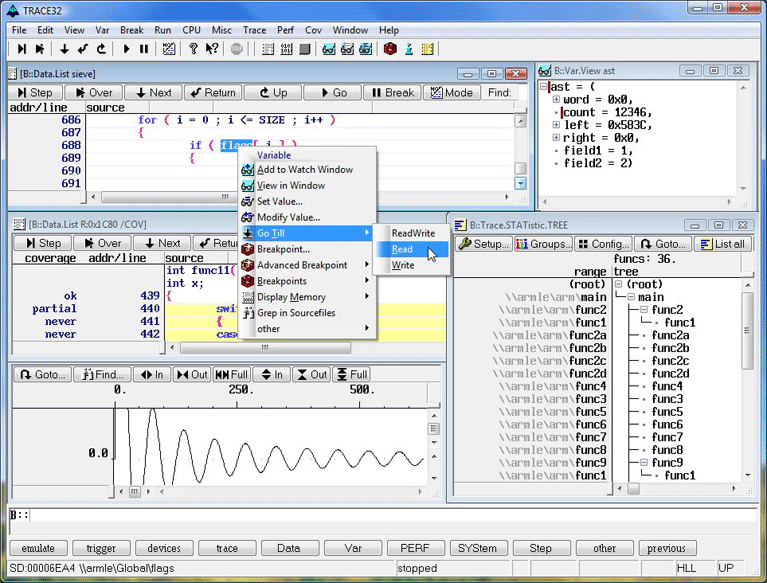
A device programmer, also called “chip programmer”, “circuit programmer”, “IC programmer” or just “EPROM burner”, is a piece of hardware for transferring data into programmable integrated circuits, such as ROMs, EPROMs, EEPROMs, Flash Memory, GALs, PALs, PLDs, CPLDs, FPGAs, and microcontrollers.
Programmer hardware has two variants. One is configuring the target device itself with a socket on the programmer. Another is configuring the device on a printed circuit board. In the former case, the target device is inserted into a socket (usually ZIF) on top of the programmer. If the device is not a standard DIP packaging, a plug-in adapter board, which converts the footprint with another socket, is used. In the latter case, device programmer is directly connected to the printed circuit board by a connector, usually with a cable. This way is called on-board programming, in-circuit programming, or in-system programming.
Phyton
Phyton produces a line of extremely fast, cost-effective device programmers for engineering and production, incl. an extensive line of programming adapters.
Engineering
The programmers below provide programming devices “in socket” with almost 600 Phyton programming socket adapters and “in-system” via special cable-adapters:
• ChipProg-40 – most economical universal programmer with a 40-pin ZIF socket
• ChipProg-48 – universal programmer with a 48-pin ZIF socket
• ChipProg-481 – our fastest universal programmer with a 48-pin ZIF socket
• ChipProg-G41 – very fast 4-site gang device programmer based on four ChipProg-481 units
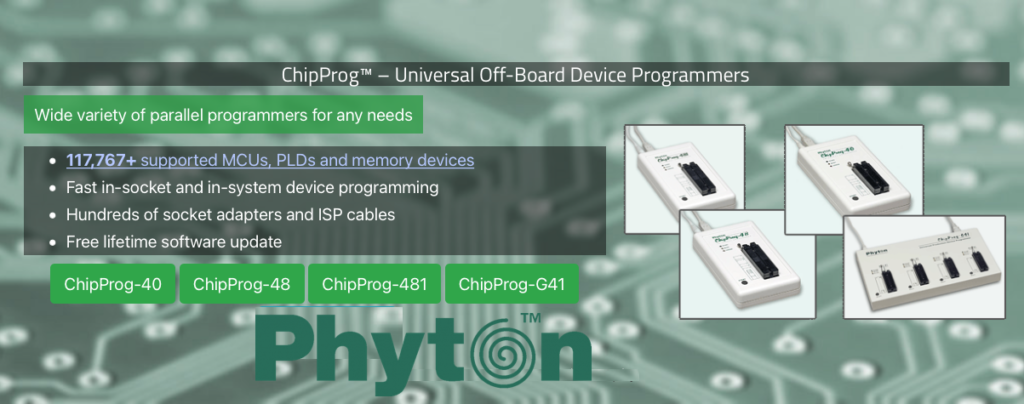
Extremely fast, cost-effective device programmers for engineering. The Phyton ChipProg™ device programmer family includes fast, easy-to-use, cost-effective in-system and in-socket USB device programmers. Various production and programming adapters are available as well.
Single-channel CPI2-B1 device programmers belong to the ChipProg-ISP2 series of Phyton production in-system device programmers (ISP). These tools, also known as ICSPs (In-Circuit Serial Programmers), are intended for flashing devices soldered on boards. They can be used for development and production. Multiple CPI2-B1 units can be connected into a gang programming cluster for high volume mass production. When used for production the programmers are normally integrated in test fixtures or other types of automated test equipment (ATE). Phyton production-grade CPI2-B1 programmers are fast, reliable, and ATE-friendly.
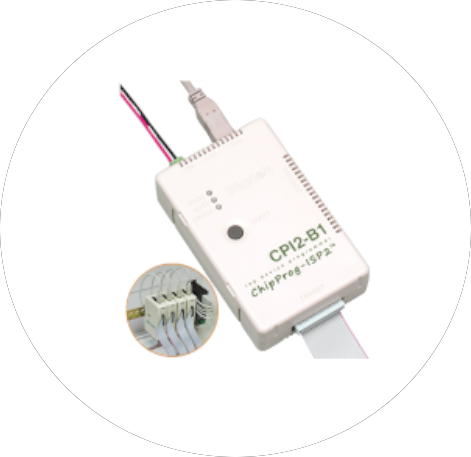
Production
Multi-channel CPI2-Gx device programmers belong to the ChipProg-ISP2 series of Phyton production in-system device programmers (ISP). These tools, also known as ICSPs (In-Circuit Serial Programmers), are intended for programming devices installed on multi-PCB panels boards via special cables or test probes connecting certain points on the boards in different types of automated test equipment (ATE). These fast, reliable, production-grade ICSPs are intended for integration in automated handlers, ICTs and other types of ATE. Multiple CPI2-Gx units can be cascaded to form a large-scale programming cluster for mass programming multi-board panels.
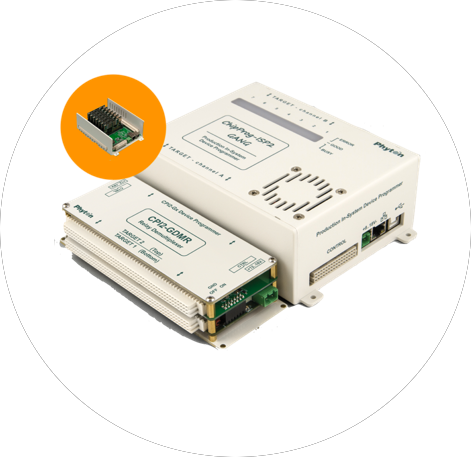
In parallel with selling standard CPI2-B1 and CPI2-Gx device programmers, Phyton offers ATE integrators semi-finished, customizable hardware and software kits for building customized device programmers inside of their own fixtures. This approach allows integrators to craft an optimal, cost effective hardware configuration that can be readily adapted to existing fixture mechanical design, and to optimally integrate the Phyton software into the ATE software. This solution is based on the CPI2-GM1 programming modules used in Phyton CPI2-Gx gang device programmer.
The programmers support a wide range of embedded microcontrollers, CPLDs, SPI flash and other memory devices.


